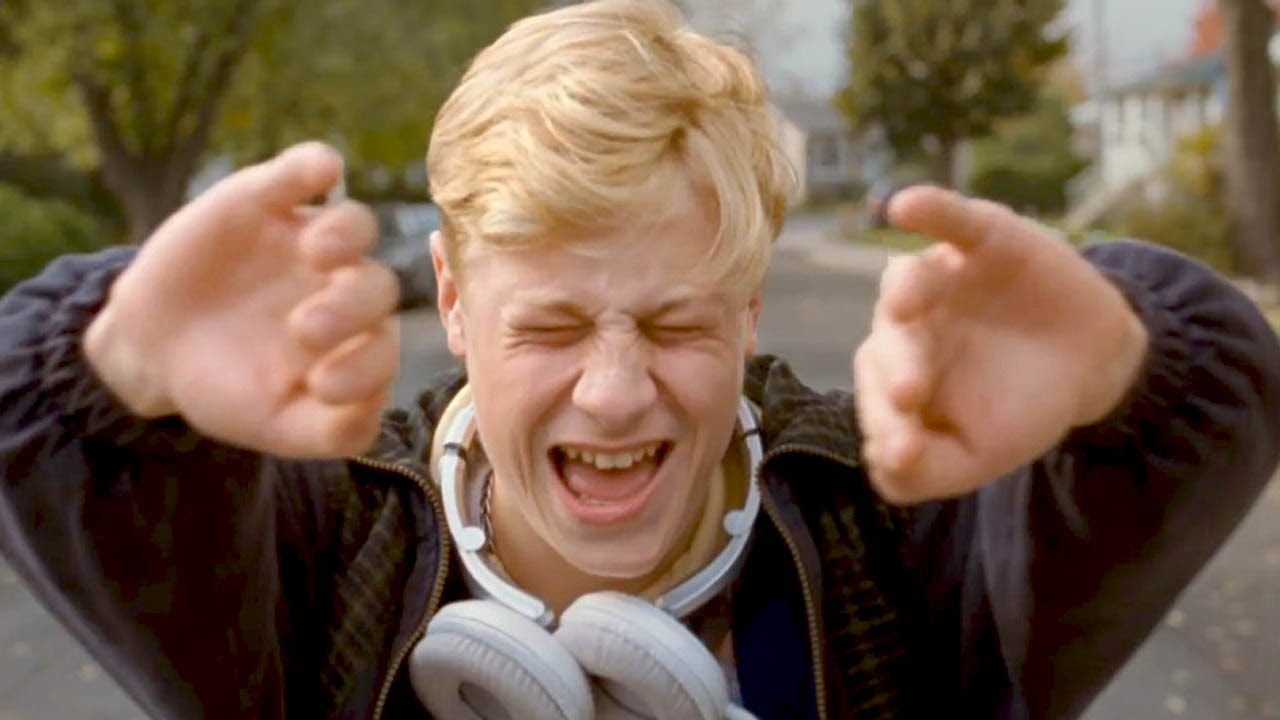film review: mommy
Xavier Dolan’s Mommy (released on April 9) brims with an exuberance that threatens to split its very illusion at the seams.
Violence brews just beneath the surface of chaotic and charming almost-teenager Steve’s countenance (played by Antoine-Olivier Pilon). Diagnosed vaguely by his mother with “ADHD… attachment disorder” he is thrust back into her life when he is ejected from a youth detention centre for burning down the cafeteria. Steve’s unpredictable behaviour, characterised by sexualised and physical outbursts, is brought to life by Pilon’s performance, which wavers expertly between the ferocious and passionate. His mother, Diane (Anne Dorval), who is often the target for these outbursts, emphasises this in the film’s frequent franglais, ‘There is never a dull moment avec Steve.” A storm in rhinestone jeans and platform shoes, the widowed mother is out of her depth, financially and emotionally – but it is her single-minded determination to fix their lives that becomes the locus for the action of the film.
The film is set (as it is almost unnecessarily overstated in the prologue) in a parallel Canada where a bill titled S-14 allows parents to institutionalise children with behavioural problems, no questions asked. When the manager of a detention centre gently suggests the idea of acting on the bill to Diane, warning ‘loving people doesn’t save them … love has no say,’ she contemptuously replies: ‘Skeptics… will be proven wrong.’ These two aphorisms are emblematic of the undercurrents that shape the film. The sheer melodrama, though not always effective, asks us to believe in the latter while asserting the reality of the former.
The pair move to their unassuming apartment, mirroring one another in spurts of screaming matches and over-the-top intimacy, brimming with an energy that is almost exhausting to watch. After a chance encounter their lives become entwined with that of the chronically stuttering Kyla (Suzanne Clément), a school teacher on sabbatical who lives a muted, uninspired life with her daughter and husband. The trio become inseparable, united in their pursuit of their shared dreams for Steve: his finishing home-school, and going to Juilliard. But there are hints of destruction teeming in their Celine Dion sing-a-longs, in the celebratory rosé handed to Steve that he then skulls. There is a sense of dread embedded in the cheesy Bocelli ballad Steve sings in the karaoke bar. There is a kind of destructiveness implicit to the heightened emotion in their faces; the extremity of the close-ups intensifying the nuance in the actors’ deft portrayals.
The film’s brewing intensity often boils over into overt melodrama and unbridled violence. The lack of restraint could be said to be characteristic of writer, director, editor, costumer designer and enfant terrible of French-Canadian cinema Dolan, a twenty-six year old wunderkind. It is a wonder we can take it seriously, if we are even we are supposed to. And yet.
And yet the unrestrained is deftly and assuredly handled in the film. The film’s narrative is not just configured around the precipice; the aspect ratio (5:4) is constricted so it literally is just this precipice, encompasses the brink these characters are drawn to, again and again. Rather than just employing close-ups the camera pans, moves and shifts along with the enthusiasm of that which it depicts.
Dated pop music (the soundtrack of the film is comprised on the contents of a CD that Steve’s father had recorded and which Steve has now meticulously memorised) mediates the spectrum of emotions depicted. At times there is a much-needed space for breath provided by slow motion. Music swells and hope abounds in the moments when the fourth-wall is broken, handled brilliantly through the sweeping hand gesture gesture of the skateboarding Steve when the screen widens to full-screen.
If chaos and violence determines the constricted lens then hope is the guiding tenet of these wide angle moments. There are two heightened sentimental sections like this, the first set to an aspirational Oasis track as the three euphorically ride bicycles and skateboards down the street; the second to rising strings as Diane watches her fantasy for her son’s life unfolding. These moments transcend the tension and claustrophobia of the rest of the film.
Almost cloying in their sappiness, they are also paradoxically, the most convincing moments – if, of course, you allow them to be. They are the most determined in their sheer willfulness, restrained in the single-mindedness of their nonrestraint. Skeptics may not be proven wrong but here they may be compelled to believe.


